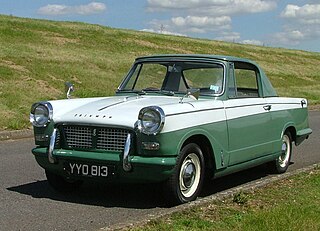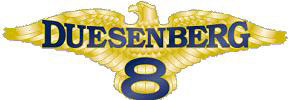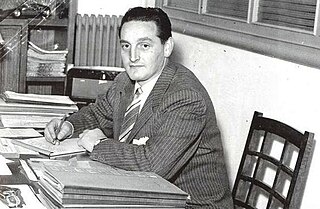Exner Revival Cars were created by noted automobile designer, Virgil Exner, produced a series of "Revival Car" concepts for a December, 1963 issue of Esquire magazine. His designs included an updated model for four famous American marques: Stutz, Duesenberg, Packard, and Mercer. [1] [2] [3] He later designed updated Bugatti, [4] Pierce-Arrow, and Jordan cars. Little came of these designs, though they became well known as plastic model kits produced by Renwal. [5]
Virgil Max "Ex" Exner Sr. was an automobile designer for numerous American companies, notably Chrysler and Studebaker.

Esquire is an American men's magazine, published by the Hearst Corporation in the United States. Founded in 1933, it flourished during the Great Depression under the guidance of founders Arnold Gingrich, David A. Smart and Henry L. Jackson.

The Stutz Motor Car Company of America, Inc., was an American producer of sports and luxury cars based in Indianapolis, Indiana, USA. Production began in 1911 and ended in 1935.
A show version of the Bugatti was built by Ghia on the last Bugatti Type 101 chassis. The Bugatti Revival Car concept was shown at the Turin Motor Show in 1965 but at the time it failed to spark another revival of that marque.

The Bugatti Type 101 is a motor car made by Bugatti in 1951 and 1952. In order to restart production after World War II and the deaths of Ettore Bugatti and his son Jean, the Type 101 was developed from the pre-war Type 57. Seven chassis were built; these were bodied by four different coachbuilders: Gangloff, Guilloré, Antem and Ghia, the last to a design by Virgil Exner. The 101 was powered by the 3.3 L straight-8 from the Type 57.

Turin is a city and an important business and cultural centre in northern Italy. It is the capital city of Piedmont and of the Metropolitan City of Turin, and was the first Italian capital from 1861 to 1865. The city is located mainly on the western bank of the Po River, in front of Susa Valley, and is surrounded by the western Alpine arch and Superga Hill. The population of the city proper is 875,698 while the population of the urban area is estimated by Eurostat to be 1.7 million inhabitants. The Turin metropolitan area is estimated by the OECD to have a population of 2.2 million.
Exner's Mercer design was also produced as a concept car. A body was crafted for a shortened (by 18 in (457 mm)) Shelby Cobra chassis, and the Mercer-Cobra was presented in 1965.

A concept car is a car made to showcase new styling and/or new technology. They are often shown at motor shows to gauge customer reaction to new and radical designs which may or may not be mass-produced. General Motors designer Harley Earl is generally credited with inventing the concept car, and did much to popularize it through its traveling Motorama shows of the 1950s.
Exner's Duesenberg revival had the most success. Exner penned a new design for 1966, and a company was formed under Fritz Duesenberg, son of August Duesenberg to produce the cars on Chrysler Imperial chassis. A prototype was again produced by Ghia, and 50 buyers signed up, including Elvis Presley and Jerry Lewis. The company fell on financial trouble before production could begin, however, with the prototype seized as payment of outstanding debts.

August Samuel Duesenberg was a German- born American automobile and engine manufacturer who built American racing and racing engines that set speed records at Daytona Beach, Florida, in 1920; won the French Grand Prix in 1921; and won Indianapolis 500-mile races, as well as setting one-hour and 24-hour speed records on the Bonneville Salt Flats in Utah in 1935. He also shared with his older brother, Frederick S. "Fred" Duesenberg, patents filed in 1913 and renewed in 1918 for a four-cylinder engine design and the Duesenberg Straight 8.

Imperial was the Chrysler Corporation's luxury automobile brand from 1955 to 1975, and again from 1981 to 1983.

Elvis Aaron Presley, also known mononymously as Elvis, was an American singer and actor. Regarded as one of the most significant cultural icons of the 20th century, he is often referred to as the "King of Rock and Roll" or simply "the King".












